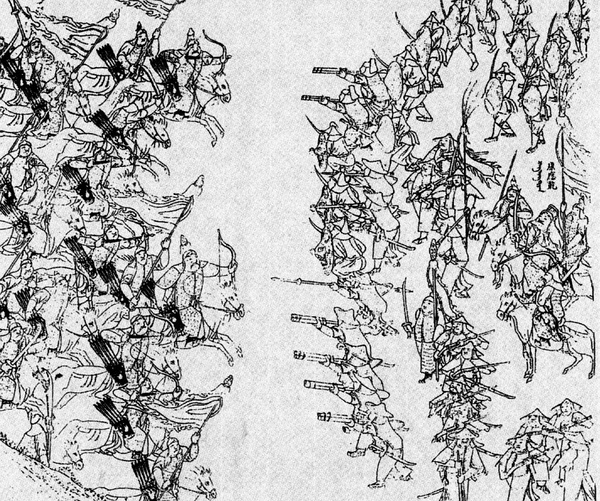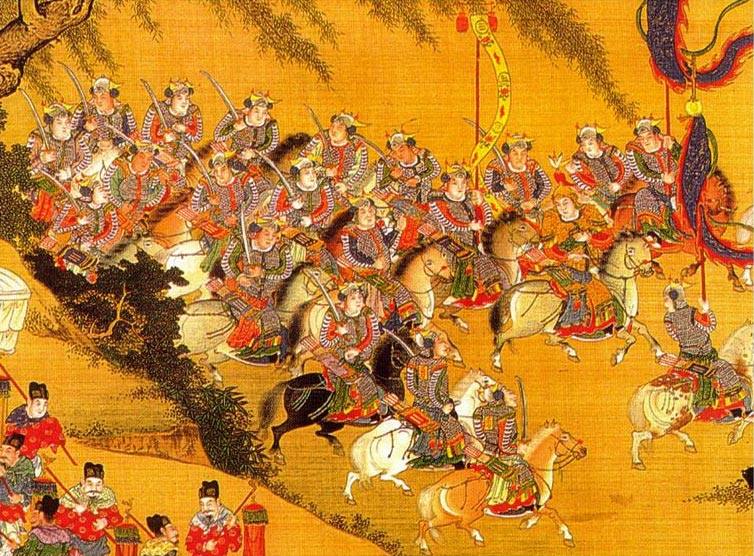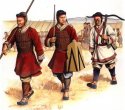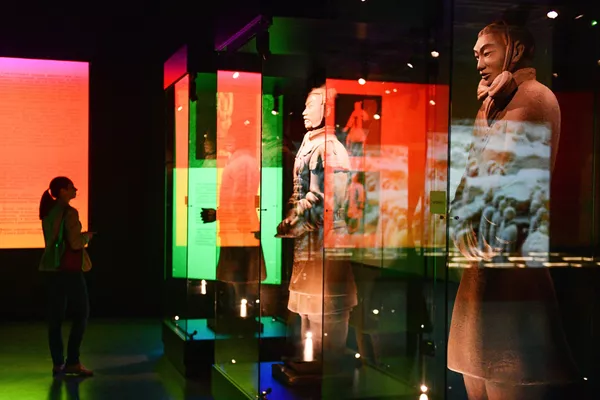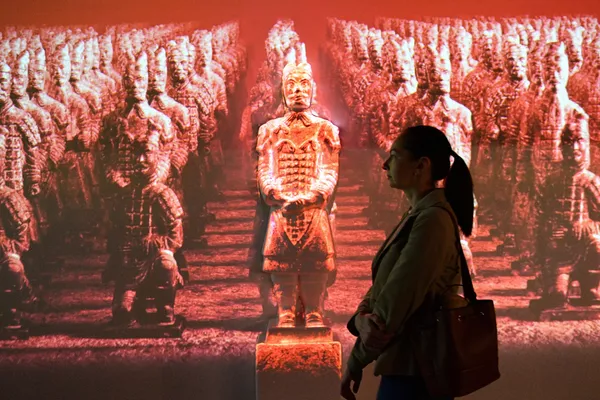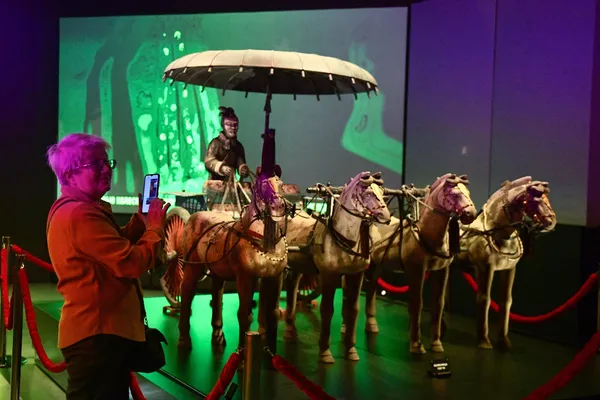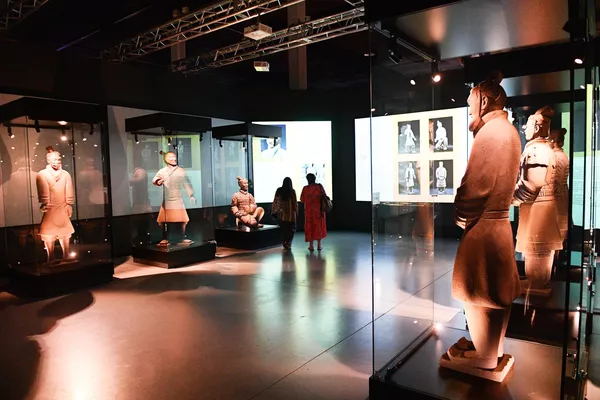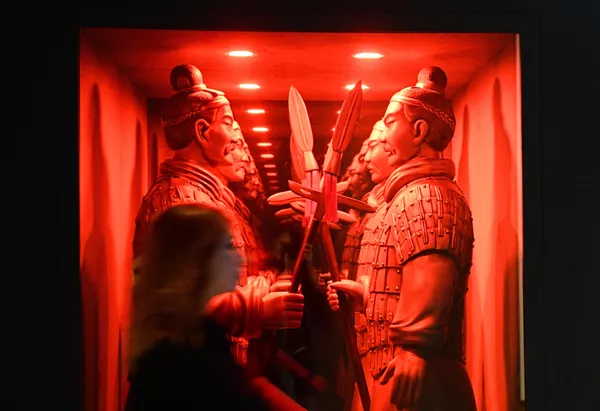You misunderstand me. a crossbow is a part of the bow family, i don't mean that they are the same. just like a reflex bow or a compound bow is a part of the bow family. like a Chinese is a Human being, but a Human may not necessarily be Chinese. A cross bow is a type of bow and it is sematics, is a dao a knife/sabre and a jain a sword? its where you choose to define what it is and we are very comfortable calling a sabre a sword in this discussion, so why not a crossbow as a bow?Crossbow and a bow are not the same. Not even close. Their construction methods are completely different. A bow would be made of bamboo and animal sinew, held together by animal glue. It is much harder to make, and since the glues can soften in humidity, need to be stored when not in use. A crossbow is made from wood, with the trigger mechanism --- a very precise job during that time, see the corner of this picture --- is metal.
Read my statement:
Crossbow fires bolts, not arrows. An arrow consists of a metal arrowhead on a wooden shaft. A crossbow bolt is one solid piece of metal.

These bolts would have to be mass produced from a cast.
Then you have the training to use a crossbow. An archer is one that is trained by growing up as one since childhood. Crossbow uses, you can use farmers and train them to use it in weeks. That allows you to have a lot of crossbowmen versus archers.
These descriptions are not completely correct. Romans for example, should be divided into different eras. Early Roman Republic vs. Late Roman Empire is very different, to start with, in their armor. Cylindrical shields only appeared from a certain period of Roman history, they started with circular shields.
Republic roman legionaries
Primary weapon: Gladius sword/dagger
Primary missile weapon: Pilum javelin X2
Secondary misslie weapon: sling with lead bullets
Armor: single chest plate of bronze or iron
Shield: rectangular curved shield
Zhou is a long dynasty, at the end of zhou, they do make iron swords:Zhou doesn't use iron sword, they use bronze jian. Animal hide and helmet?
By the time of the Spring Autumn period, Warring States and the Qin, Chinese were using lamellar armor, that is bronze plates that are woven into a matrix, over layers of leather and cloth. Lamellar armor is the best armor pre-BC ancients had, period. Of course, lamellar armor would only get better in later dynasties, where the count of the plates would go up from 800 to 2000 plates by the late Tan Dynasty.

Ofcourse iron rusts away and bronze is more inert so we have more historical artifacts that are bronze.
The point is, Chinese infantry were not just armed with a single weapon and that swords are a secondary weapon to the other equipment they are wielding be it pole arms, bows, etc. This is consistent with all ancient cultures. this is back to the discussion of how long a sword needs to last and it needs to last the battle or campaign.Ancient Chinese used shields. There is also evidence of the use of pikes, and phalanx formations, with equivalents to Sarissa. This is from the Terracota army. The impression that Chinese don't use shields is that of the later dynasties, because lamellar body armor is so effective and thick, shields grew smaller and smaller over time till they are discarded.
Chinese armor grew thicker and thicker but something happened to cause them to grow thinner. That was already at the time when the Song were confronting the Mongols. As the Mongols were often skirmishers, having voluminous body armor proved ineffective as it often slows you down. At this point on, its about mobility and speed.
Except that Chinese swords were typically longer. By the time of the Tang Dynasty, Chinese dao were like 5' in length. These swords are not carried on the hip but on the back. These are not your secondary weapons.
They are quite numerous by the Song Dynasty as required formations. Even a Song Emperor personally intervened in the design process for a new sword to deal with the heavy cavalry of the Jin and the Liao. These northern kingdoms were using Cataphracts that are heavily covered by lamellar armor in addition to the rider bodies themselves, and are impervious to all Chinese weapons, even crossbows. The result is the Zhanmadao, and the Song had special formations of very brave men to handle it.
Now as for "swinging" the long sword. Typically, long swords are also used like lances.
As for cavalry lancers, the problem of that if the lance sticks through its victim, its going to get stuck, and the violence of such will also take the rider down. Hence why the northern cavalry typically uses sabers, curved ones at the end --- the design would later influence Chinese Dao in later periods, as well as Middle Eastern swords.
What you didn't get as a fact that Qin -> Han saw a shift from using bronze to iron to steel in a mass fashion. That's the archeological evidence behind it. The lamellar armor for example, shifted from using bronze plates to iron or steel plates. The Ge, which used to be made in bronze, shifted to steel. By the late Han Dynasty, the steel Dao, in the two handed form with the ring dowel, is the prominent CQC weapon, replacing the bronze jian. Since samples of these swords are found all over, these swords are not likely to be rare.














